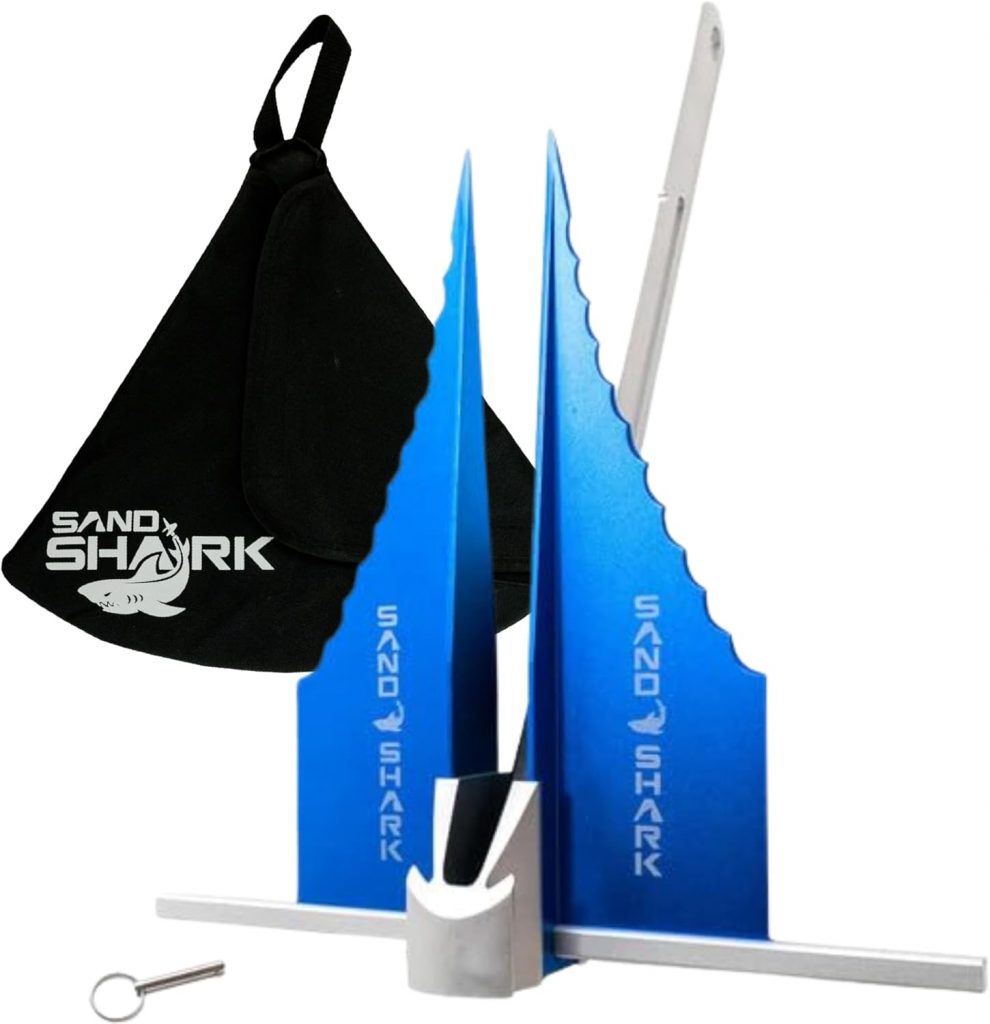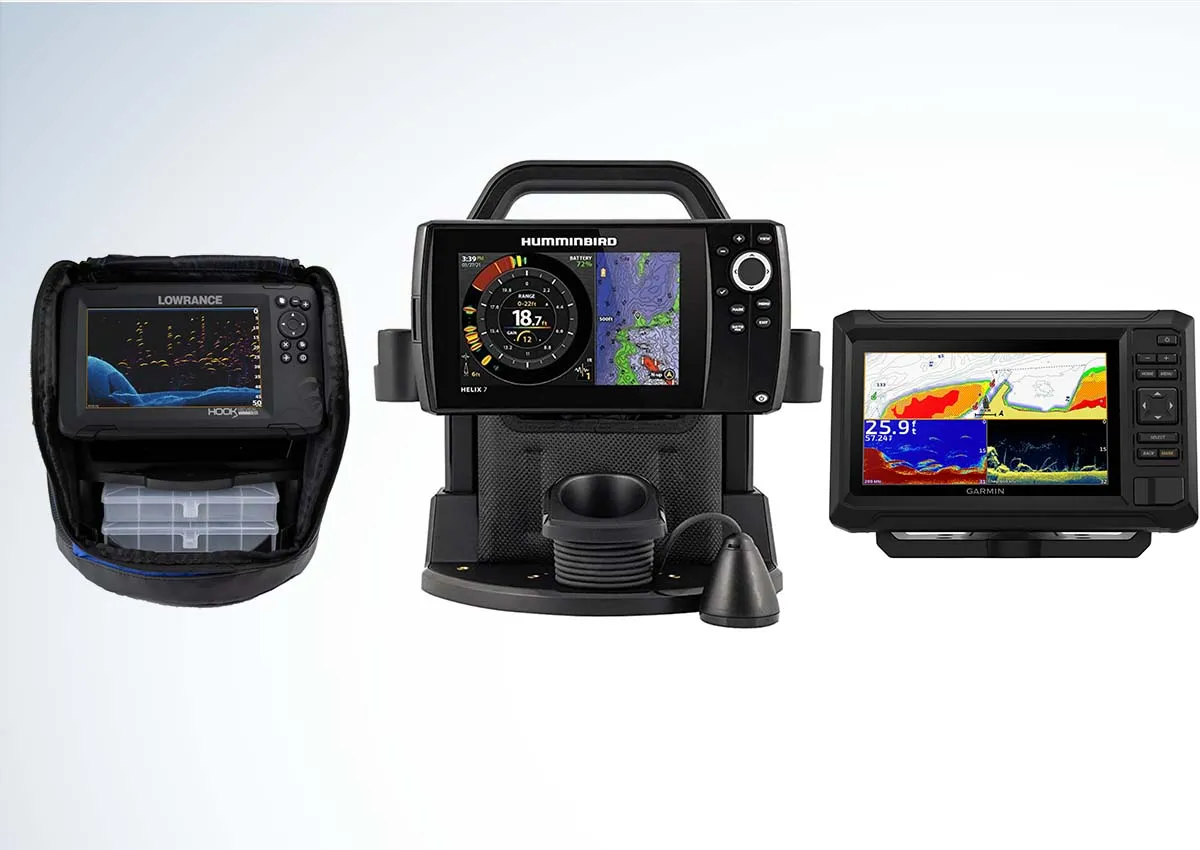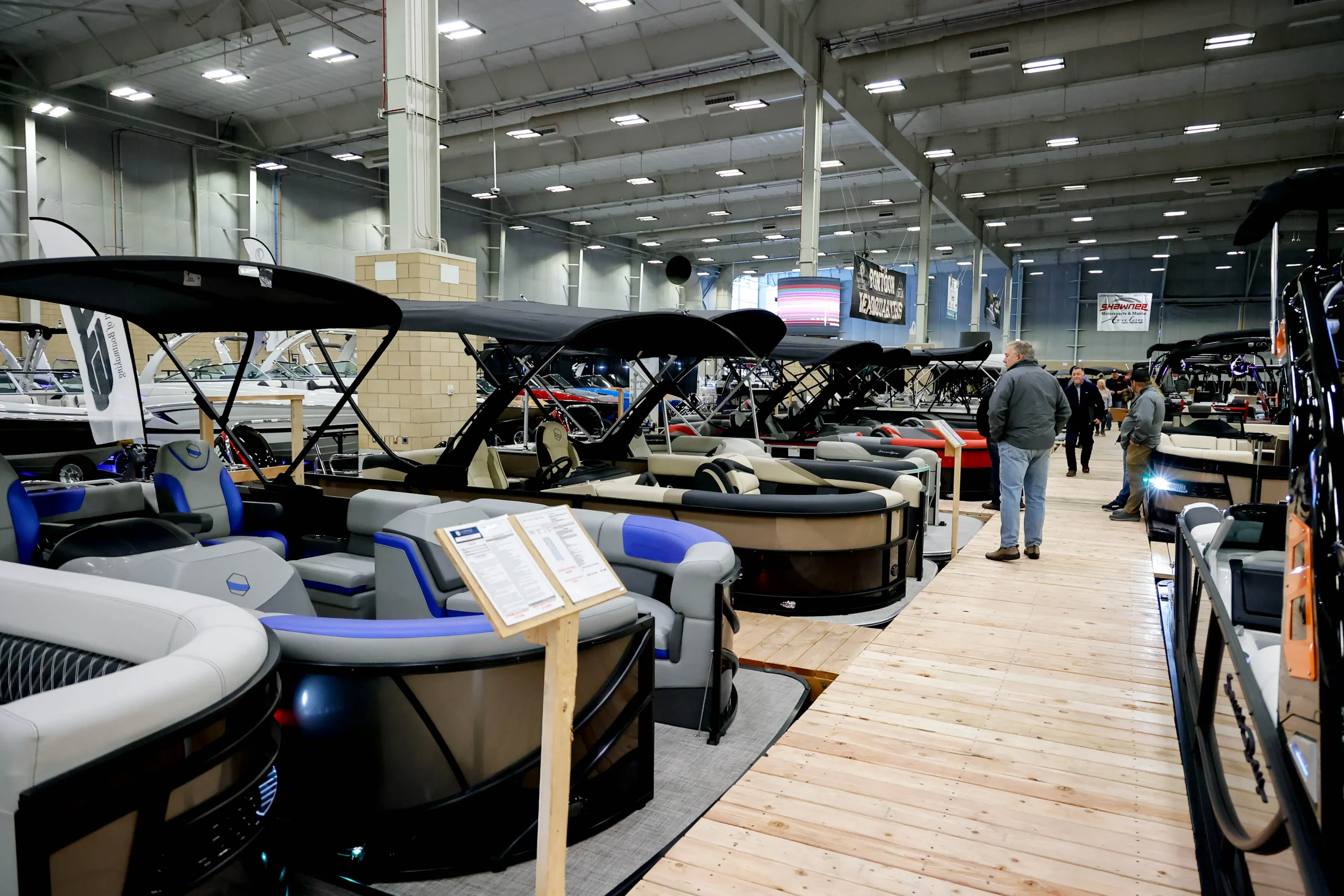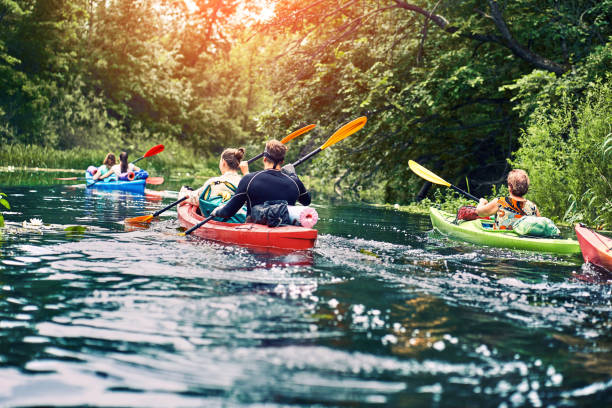Boat Anchor: Choosing the Right One for Your Vessel
Choosing the right boat anchor can make all the difference in ensuring your vessel stays secure in various water conditions.
With so many types, sizes, and materials available, understanding the best anchor for your boat can save you time, money, and provide peace of mind.

From lightweight fluke anchors to heavy-duty cast iron options, each type is designed for specific environments and needs.
When considering a boat anchor, it's important to know what will work best for your typical anchoring conditions.
For instance, fluke anchors are ideal for sandy or muddy bottoms, while Navy anchors provide exceptional hold in shale, clay, or grassy areas.
Furthermore, selecting the right size and weight is crucial for anchoring stability, especially in unpredictable weather.

Aside from the anchor itself, there are accessories like anchor chains, windlasses, and anchor ropes that play a significant role in the anchoring process.
The right combination of these tools ensures optimal performance and safety.
Understanding how to properly maintain and store your anchor and its accessories will also extend their lifespan and reliability.

Key Takeaways
- Choosing the right anchor depends on your boat and water conditions.
- Different types of anchors work best for specific environments.
- Proper accessories and maintenance enhance anchoring performance.
Types of Boat Anchors
Choosing the right boat anchor depends on the type of vessel and the seabed it will encounter. The specific design and weight of an anchor determine its suitability for certain conditions.
Fluke Anchors
Fluke anchors, also known as Danforth anchors, are lightweight and perform well in mud and sand. They feature a rotating bar that helps the flukes drive straight down into the seabed.
As the line lays out, the bar swivels horizontally, providing a secure hold.
- Boat Size: Typically for boats up to 30 feet.
- Material: Often made from galvanized steel or aluminum.
- Best For: Lakes, rivers, and sandy or muddy bottoms.
- Features: Lightweight, easy to handle, and has good holding power.

Plow Anchors
Plow anchors have a shape similar to a farming plow, helping them to hold in various seabeds. They are versatile, with a broad scoop section that digs into the seabed.
- Types: Delta and CQR are common types.
- Boat Size: Suitable for boats of varying sizes, typically mid-sized to large vessels.
- Material: Usually made from galvanized steel.
- Best For: Rock, sand, and weedy bottoms.
- Features: Good holding power; some models can reset if the wind changes.

Claw Anchors
Claw anchors, also known as Bruce anchors, are designed with a broad scoop and three claws. This design helps them to dig into various substrates.
- Boat Size: Effective for mid-sized boats up to about 60 feet.
- Material: Often made from galvanized steel.
- Best For: Soft bottoms, including mud, rock, and coral.
- Features: Good for a variety of seabeds; less effective in loose sand.
Mushroom Anchors
Mushroom anchors are shaped like an inverted mushroom cap, making them ideal for permanent moorings.
- Boat Size: Best for small boats and dinghies.
- Material: Made from heavy metals like cast iron.
- Best For: Soft bottoms such as mud and silt.
- Features: Heavy and provides a permanent hold; not suitable for areas with strong currents.

Grapnel Anchors
Grapnel anchors are compact and have multiple prongs, making them versatile for various conditions.
- Boat Size: Ideal for small boats and temporary anchoring.
- Material: Typically made from galvanized steel.
- Best For: Rocky bottoms, weedy areas, and rivers.
- Features: Easy to store; prongs can fold up making it compact.
Others
There are other types of anchors like the Fortress and river anchors.
The Fortress anchor is made from a high-strength aluminum-magnesium alloy, offering lightweight yet strong holding power.
- Fortress Anchors: Lightweight, made from aluminum, and easy to handle.
- River Anchors: Designed for river currents, typically grapnel-type.
- Materials: Commonly made from galvanized steel or aluminum.
- Features: Specific designs to address unique anchoring challenges, such as strong currents or specific seabeds.
Anchor Materials and Construction
Boat anchors come in various materials such as steel, galvanized steel, stainless steel, and aluminum. Each material offers unique advantages in terms of durability and performance.
Steel Anchors
Steel is one of the most common materials used for boat anchors due to its strength. Steel anchors provide a reliable hold in different sea bottoms.
They are known for their high durability and resistance to bending under strain.
Common types of steel anchors include Delta and CQR, widely used in the boating industry.
These anchors perform well in various bottom conditions but may struggle in rocky areas. Their strength makes them suitable for larger vessels requiring a stable anchoring solution.

Galvanized vs Stainless Steel
Galvanized steel and stainless steel anchors offer different levels of corrosion resistance.
- Galvanized steel anchors are coated with zinc to prevent rusting. This makes them more affordable and durable for long-term use in saltwater environments. However, the coating can wear off over time, reducing its corrosion resistance.
- Stainless steel anchors, while more expensive, offer superior corrosion resistance and aesthetic appeal. They are often chosen for their longevity and minimal maintenance. The downside is their cost, which can be a significant factor for some boat owners.
Both materials provide reliable performance, but the choice depends on budget and specific boating needs.
Aluminum Anchors
Aluminum anchors are valued for their lightweight properties.
They are easier to handle and deploy, making them a popular choice for smaller boats or for use as secondary anchors.
Despite their lightweight nature, they are capable of providing a strong hold in various bottom types.
One limitation is that they may not be as durable under extreme conditions compared to steel anchors.
However, modern advancements have led to the development of high-strength aluminum alloys that enhance their performance and durability, providing a balanced mix of lightness and strength.
Anchoring Techniques
Understanding how to anchor a boat properly involves essential steps like setting the anchor, retrieving it, and sometimes using more than one anchor.
It's crucial to consider water depth, wind, and currents to ensure the boat stays secure.
Setting an Anchor
When setting an anchor, choose a spot with good holding ground.
Easing the boat to a near stop at this point is important.
Let the anchor descend to the bottom while the boat drifts back.
Pay out the rode until you reach 7 to 10 times the depth of the water (7:1 to 10:1 scope).
Then, secure the rode to a bow cleat.
Use the engine in reverse to help set the anchor firmly in the seabed.
This technique helps the anchor dig in and increase its holding power.
Retrieving an Anchor
When retrieving an anchor, motor slowly towards it while taking in the slack of the anchor rode.
Avoid pulling directly upward as this can damage the boat and anchor.
Once the boat is above the anchor, pull the rode straight up to break the anchor free from the bottom.
If it's stuck, try maneuvering the boat in a different direction to loosen it.
Winch the anchor up once it's free and secure it on board.
Using Multiple Anchors
In challenging conditions like strong currents or unpredictable wind changes, using multiple anchors can provide extra stability.
The most common setup involves a bow and stern anchor.
First, set the bow anchor as usual.
Then, either drop the stern anchor from the boat or use a dinghy to place it at the desired distance.
Tighten both rodes to ensure the boat stays in place without drifting too much.
This method helps reduce swinging and keeps the boat facing the wind or current better.
Selecting the Right Anchor
Choosing the right anchor for a boat involves considering several critical factors, including the size and weight of the boat, as well as the conditions of the bottom where the anchor will be deployed. These elements ensure a secure hold, preventing a boat from drifting.
By Boat Size
The size and weight of a boat are key factors in anchor selection. Heavier and larger boats need anchors that are both bigger and heavier to hold the vessel securely.
In general, the heavier the boat, the more holding power the anchor must have.
For instance, a boat weighing 54,000 lbs typically requires an anchor weighing around 99 lbs. This ensures the anchor can handle the forces exerted by the boat’s mass and windage.
Sizing Chart Example:
- Boat Length: 30-40 feet -> Anchor Weight: 35-50 lbs
- Boat Length: 40-50 feet -> Anchor Weight: 50-70 lbs
It's essential to consult anchor sizing charts that match boat specifications closely.
By Bottom Conditions
The type of substrate at the anchoring site is crucial in choosing the right anchor. Different anchors perform better in various bottom conditions like mud, sand, rock, and clay.
- Mud: Fluke or Danforth anchors are effective as they can penetrate soft floors easily.
- Sand: Delta anchors are suited for sandy bottoms due to their broad flukes that dig in well.
- Rock: Grapnel anchors are recommended because their design can catch on rocky surfaces.
- Clay/Silt: CQR or plow anchors work well as they can penetrate and hold effectively in denser substrates.
Each bottom condition requires a specific type of anchor to maintain optimal holding power and ensure the boat stays secure in varying conditions.
Anchor Accessories
Boat anchors come with various accessories that enhance their performance and usability.
Anchor Chains and Ropes: Chains and ropes, often called rode, are essential parts of the ground tackle. Chains provide weight and extra holding power. Ropes offer flexibility and ease of handling. Common materials include stainless steel and nylon.
Anchor Swivels: Anchor swivels connect the rode to the anchor. They reduce twisting and tangling, making the anchor easier to retrieve.
Shackles: Shackles link different parts of the ground tackle. They ensure secure connections between the anchor, chain, and rope.
Anchor Storage: For convenience, padded cases and storage bags protect the anchor and other accessories. They keep everything organized and prevent damage to the boat.
Anchor Hooks and Tensioners: Hooks and tensioners help with securing the anchor line on the boat. They ensure the line stays taut and reduces slippage.
Popular Accessories
| Accessory | Description | Price (Approx.) |
|---|---|---|
| SandShark Lite | Shallow Water Anchor | $69.99 |
| Braided Anchor Line | 3/8" x 100' White Rope | $18.99 |
| Fluke Anchor Kit | Includes Chain and Rope | $79.99 |
These accessories help in anchoring effectively, ensuring a secure and hassle-free experience.
Maintenance and Storage
Proper maintenance and storage of boat anchors ensure their longevity and reliability. Regularly inspecting and cleaning the anchor helps prevent damage, and safely stowing the anchor and its line ensures it is ready to use whenever needed.
Inspecting and Cleaning
Regular inspection is vital for maintaining the integrity of your boat anchor.
Check for signs of wear and damage, such as bent claws or cracks. Look closely at moving parts like pins and swivels to make sure they are not corroded.
Cleaning the anchor after each use prevents the buildup of salt, mud, and debris.
This helps in avoiding corrosion and keeps the anchor in good working condition. Use fresh water to rinse it thoroughly.
Occasionally, scrub the anchor with a stiff brush to remove stubborn dirt. Applying a protective coating can also help in prolonging its life by preventing rust.
Stowage Solutions
Proper storage of boat anchors and their components is crucial.
Store the anchor in a dedicated anchor locker or a storage box that is dry and well-ventilated. Ensure the storage area is easily accessible, but secure enough to prevent movement during transit.
Use anchor storage boxes that are inspected periodically for signs of damage or wear. This ensures the anchors and their lines are kept safe when not in use.
Wrapping the anchor line properly prevents tangles and ensures it is ready to deploy swiftly.
Anchor Safety and Best Practices
Safety is crucial when anchoring a boat. Proper techniques help protect the vessel and ensure a secure boating experience.
Before anchoring, make sure all equipment is ready. This includes the anchor, rode, and any other necessary tools. These should be easily accessible.
When you decide to drop anchor, approach the location slowly. Always move into the wind or current. This allows for easier control.
Depth is important. To determine the proper amount of rode (the line connecting the anchor to the boat), use a scope ratio of 7:1. For every foot of water depth, let out seven feet of rode.
Here’s a quick guideline:
- Water Depth (feet): 10
- Rode Length (feet): 70
Once the rode is released, secure it to a bow cleat. Apply power in reverse to set the anchor properly into the bottom.
In crowded areas, swing room must be considered. This is the space the boat will move around the anchor as currents and winds change. Too little room can lead to collisions.
Using two anchors can provide added stability. Set them 180° apart and secure both lines to the bow. This setup keeps the boat in a smaller arc.
Weather conditions should always be monitored. Changing conditions can affect the boat's position and anchor hold.
Lastly, make regular checks on the anchor and rode for wear and tear. Proper maintenance ensures reliability during every boating trip.
Advancements in Anchor Technology
Innovations in anchor technology have transformed the way boats and yachts are moored. Modern anchors are designed with new materials and manufacturing techniques that improve performance and reliability.
1. New Generation Anchors
Recent designs like the Spade and Rocna anchors provide better holding power and faster setting times. These anchors are made from high-quality steel and aluminum, making them both strong and lightweight.
2. Computer Numerical Control (CNC) Machining
CNC machining has revolutionized anchor production. It allows for the precise and automated creation of anchor components. Using CAD software, manufacturers can now produce anchors with intricate designs not possible before.
3. Remote-Controlled Anchors
Newer models feature remote control capabilities. These systems allow boaters to deploy and retrieve anchors with the press of a button. This brings ease and convenience, especially in rough waters.
4. Precision GPS Positioning
Anchors integrated with GPS provide exact positioning, ensuring the boat stays in place. This technology is crucial for avoiding drift and maintaining stability in various weather conditions.
5. Automatic Deployment Mechanisms
Some advances include automatic deployment systems that release the anchor smoothly and evenly. This feature helps in achieving quick and effective anchoring without much manual effort.
6. Notable Manufacturers
Companies like Lewmar have been at the forefront of these advancements. Lewmar anchors combine innovative designs with high-quality materials, setting industry standards.
Comparison of Traditional vs. Modern Anchors
| Feature | Traditional Anchors | Modern Anchors |
|---|---|---|
| Material | Iron | Steel/Aluminum |
| Manufacturing | Manual | CNC Machining |
| Control | Manual | Remote-Controlled |
| Technology | Basic | GPS, Auto-Deploy |
Buying Guide: Where to Purchase
When searching for the perfect boat anchor, it's essential to know where to look. With numerous options available, it's easier than ever to find a high-quality anchor.
Local Marine Stores
Local marine stores offer the advantage of seeing and feeling the anchors before buying. They also provide expert advice tailored to your specific needs.
Online Retailers
Websites like Amazon, West Marine, and Spade Anchor USA have a vast selection of boat anchors. They often provide customer reviews, which can be incredibly helpful.
Specialty Stores
Specialty online boat shops might offer a wider variety of anchors, including the latest models. They sometimes have charts and guides to help you choose the right anchor size and type for your vessel.
Manufacturer Websites
Purchasing directly from manufacturer websites ensures you get the latest products and might include warranties and detailed product descriptions.
Sailing Clubs and Marinas
These places often have bulletin boards where people sell used boat equipment, including anchors. This can be a cost-effective way to purchase.
Quick Tips
- Check for Reviews: Read customer reviews for insights on performance and durability.
- Compare Prices: Shop around on different websites to find the best price.
- Look for Sales: Seasonal sales and promotions can save money.
Recommended Online Stores
| Website | Features |
|---|---|
| Amazon | Wide selection, customer reviews, competitive pricing |
| West Marine | Expert advice, in-store pickup, detailed product information |
| Spade Anchor USA | Specialized anchor sizing charts, direct from manufacturer |
| Marine Expert | Unbiased reviews, industry news, and guides |
Browsing these options can make the process of buying a boat anchor much simpler and more convenient. Each source has its own benefits, so consider what works best for your needs.
Understanding Anchor Rating Systems
Anchor rating systems help boaters choose the best anchor for their needs. These systems often consider holding power, water conditions, and boat size.
The main measure is holding power. It indicates the anchor’s ability to grip the seabed. This value, usually given in pounds, shows how much force the anchor can resist before dragging.
| Anchor Type | Holding Power per Pound |
|---|---|
| Delta | High |
| Bruce | Medium |
Different water conditions also impact anchor choice. For calm waters, less holding power may be needed. In rough waters, a higher-rated anchor is essential.
Anchor Types and Their Performance:
- Delta Anchor: Known for versatile performance in various seabeds.
- CQR Anchor: Performs well, but less effective in rocky bottoms.
Boaters should also consider their boat’s size. Larger boats need anchors with higher holding power due to their weight and the forces acting on them.
Frequently Asked Questions
Choosing the right boat anchor involves considering boat size, seabed type, and specific anchor features. Regulations also impact where you can safely anchor your boat.
How do you determine the appropriate anchor weight for your boat size?
The correct anchor weight depends on the size and type of your boat. Generally, larger boats require heavier anchors to ensure stability. Boating guidelines often provide specific weight charts that match boat sizes with suitable anchor weights.
What are the regulations regarding where you can anchor your boat?
Regulations vary by location, but common restrictions include avoiding protected areas, marinas, and private property. Always check local laws to ensure compliance and reduce environmental impact. Authorities may post specific signs or instructions in certain boating areas.
Can you provide a size chart for boat anchors?
A basic size chart helps match anchor weights to boat lengths. For example:
- Boats up to 22 feet: 6 to 10-pound anchors.
- Boats 23 to 30 feet: 10 to 18-pound anchors.
- Boats 31 to 40 feet: 18 to 25-pound anchors.
What factors should you consider when choosing an anchor for your vessel?
Several factors affect anchor selection:
- Boat Size and Weight: Larger, heavier boats need stronger anchors.
- Seabed Type: Different seabeds (sand, mud, rock) require specific anchor designs.
- Weather Conditions: Areas with strong currents or winds demand more robust anchors.
How does the type of seabed affect anchor choice?
Seabed type is crucial in selecting an anchor. Fluke anchors work well in sand and mud due to their design, while plow anchors are better for rocky or grassy bottoms. Knowing the seabed type helps in choosing an anchor that will hold securely.
What are the different types of boat anchors and their uses?
There are several common types of anchors:
- Fluke Anchors: Ideal for sand and mud.
- Plow Anchors: Suitable for various seabeds including rocky or weedy areas.
- Mushroom Anchors: Best for soft seabeds like mud.
- Grapnel Anchors: Often used for smaller boats and rocky bottoms.
Choosing the right anchor depends on your boat's size, the common seabed types in your area, and typical weather conditions.
Charlie is Editor-in-Chief of Sea Magazine







